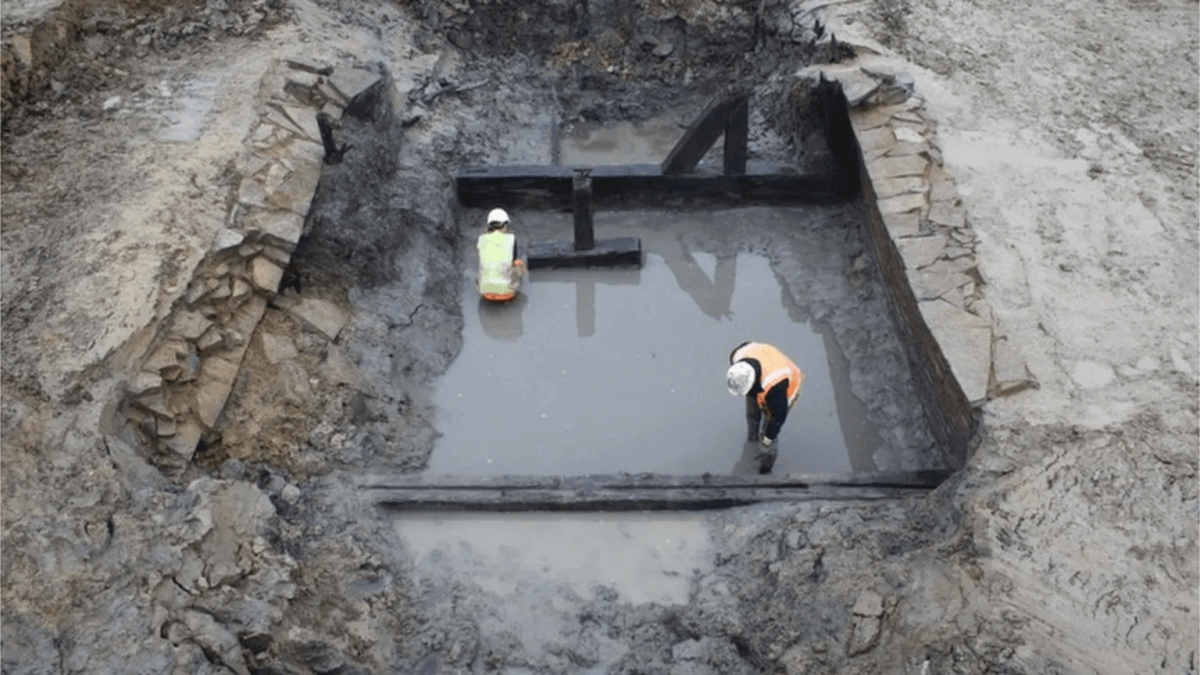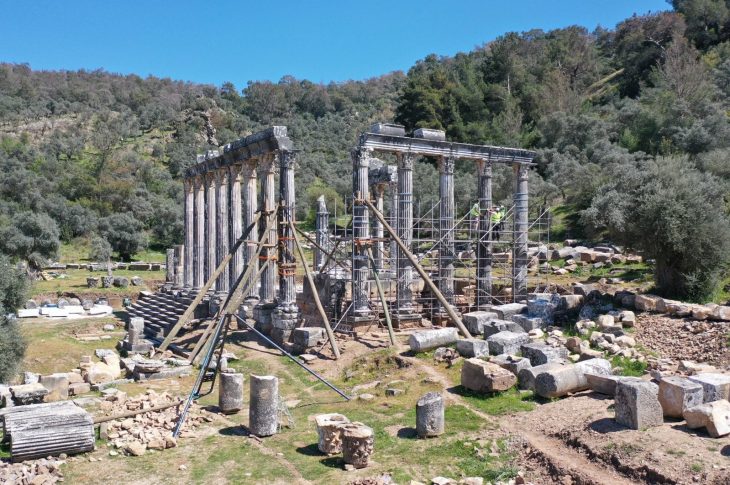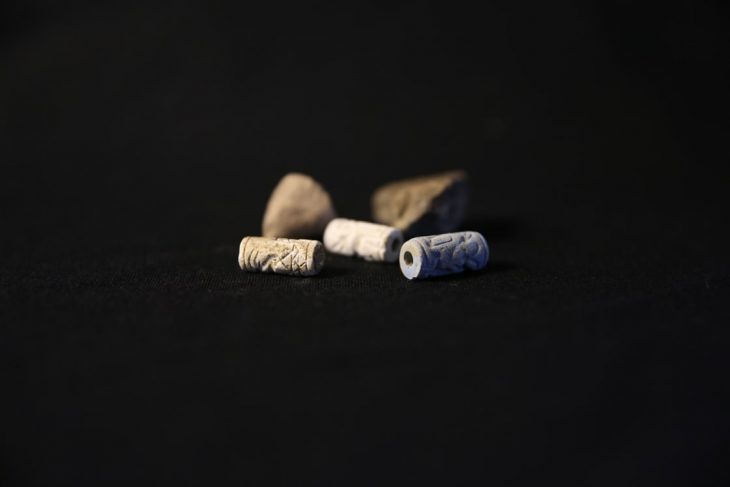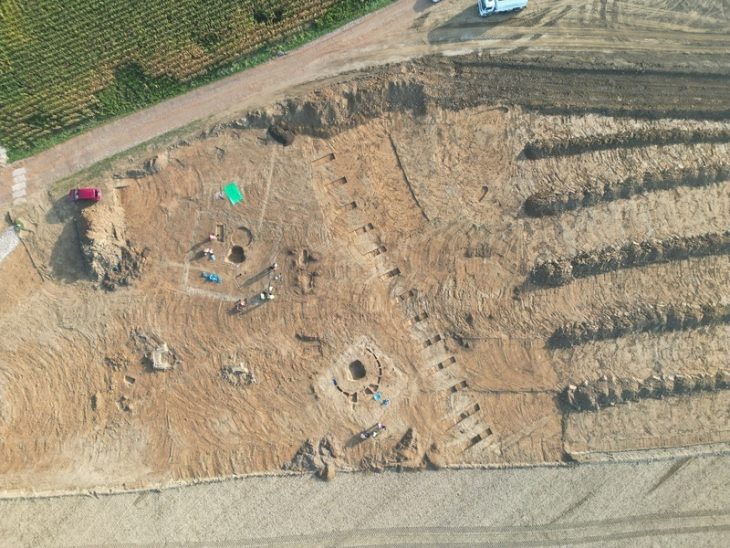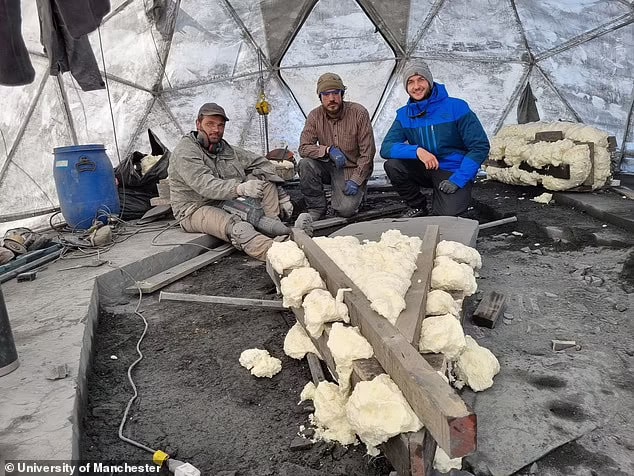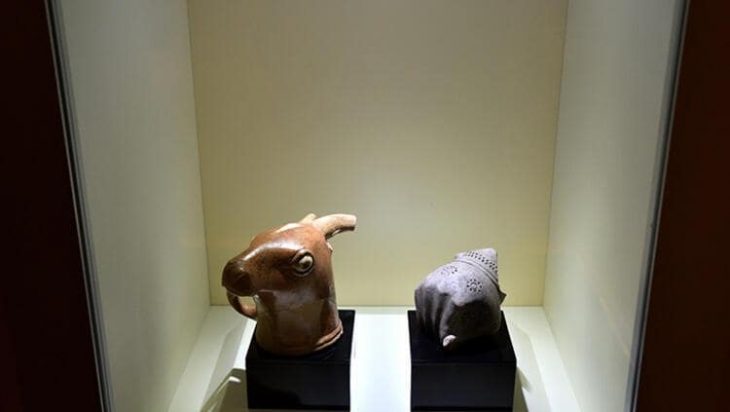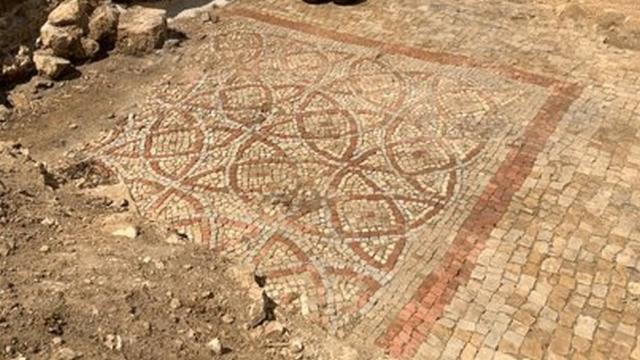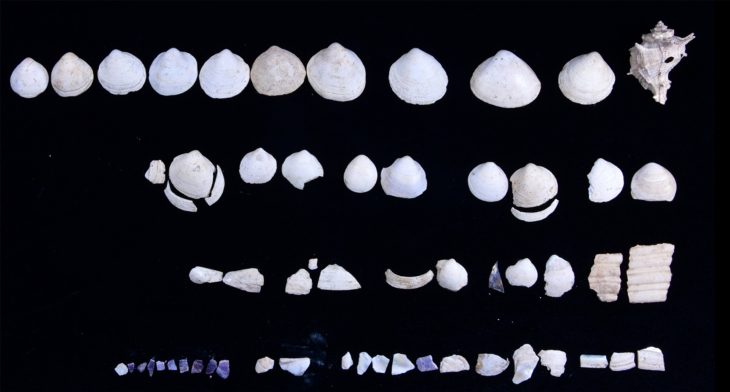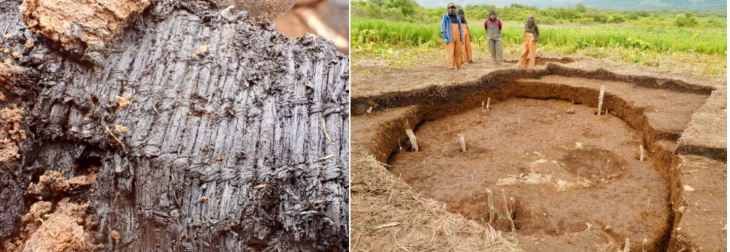Cotswold Archaeology’s excavations in Tewkesbury, a historic riverside town north of Gloucestershire, England, have revealed a medieval moat and bridge that protects a farmhouse.
Archaeologists made the discovery while exploring the site of Cowfield Farm, believed to date from the 12th or 13th centuries. This discovery is proof that moats were not just for castles.
The century-old brick farmhouse at Cowfield Farm was destroyed in a fire in 2004 and subsequent reconstruction work by Robert Hitchins Ltd provided Cotswold Archeology with the opportunity to investigate the site. This location is first mentioned in documentary evidence in 1535, when it was part of a freehold estate belonging to Tewkesbury Abbey, but it has now been found that its origins lie much earlier in the medieval period.
Cotswold Archaeology’s excavations have revealed this early history, showing that the original farmhouse was built within a rectangular enclosure and probably dates to the 12th to 13th centuries. While no buildings from this period survive, rubbish found in the enclosure ditch provided evidence of the farmhouse’s existence; this original structure must have been demolished at some point and a new, stone one built. Although there are only a few remains from this iteration of the farmstead, a large cornerstone suggests that it was a substantial house whose status might have reflected the wealth of the monks from Tewkesbury Abbey, who owned it.
3D model of the medieval moat bridge, showing wooden foundations and partially collapsed masonry piers.
Encompassing the building was a large rectangular moat that would have been for protection as well as to serve as an additional symbol of the farm’s status (below). North of the moat, it seems that a large aisled building – possibly a cowshed – was built. Historical records from this period suggest that the farm was then a centre specialised in cattle rearing, known as a vaccary.
Jon Hart of Cotswold Archaeology told the BBC “It’s painstaking work picking apart all the deposits and coming up with a story about the site.”
The farm’s layout and remains provide a glimpse into a self-sufficient medieval establishment, complete with a farmhouse, cowshed, and other essential outbuildings, all overseen by the abbey’s monks.
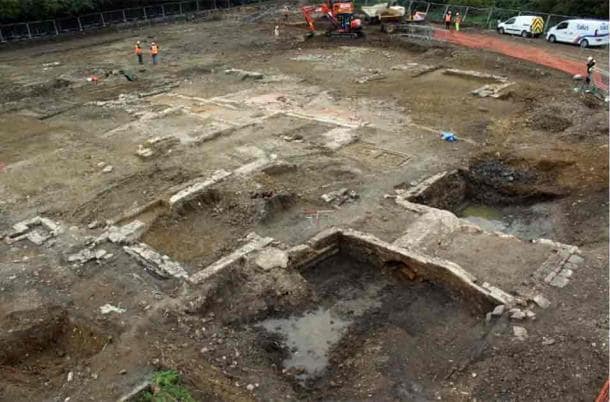
An accurate date cannot be obtained from the numerous times the moat has been dredged; however, the excavation team did find a portion of a wooden bridge that was dendrochronologically dated to the middle of the fifteenth century. Although this indicates when the moat was used, both it and the stone farmhouse may have been built earlier.
“If you say moat, everybody thinks of a castle with a big moat around it, as a defensive ditch,” explained Mr Hart, senior publications officer of the archaeological educational charity.
“But moats were used way down the social scale to the wealthier peasants, the movers and shakers of village life.
“A moat was partly for security, as there was no police force; so there was a practical aspect.”

“This one was definitely filled with water, with the Christian symbolism of purity and the lady of the house, whose fidelity had to be protected, surrounded by a symbolic virtuous belt of water.”
A copper-alloy book fitting that may have belonged to a Tewkesbury Abbey monk documenting details of the farm, a pilgrim badge showing the Archangel Michael vanquishing the Devil (possibly from Mont St-Michel in France), and a ceramic dripping tray for roasting meat are among the small artifacts from the site that bear witness to the farmstead’s relative wealth.
After several centuries of use, the medieval house and barn were then demolished to make way for the brick farmhouse in the mid-18th century, which then stood there until 2004.
Cover Photo: Cotswold Archaeology

